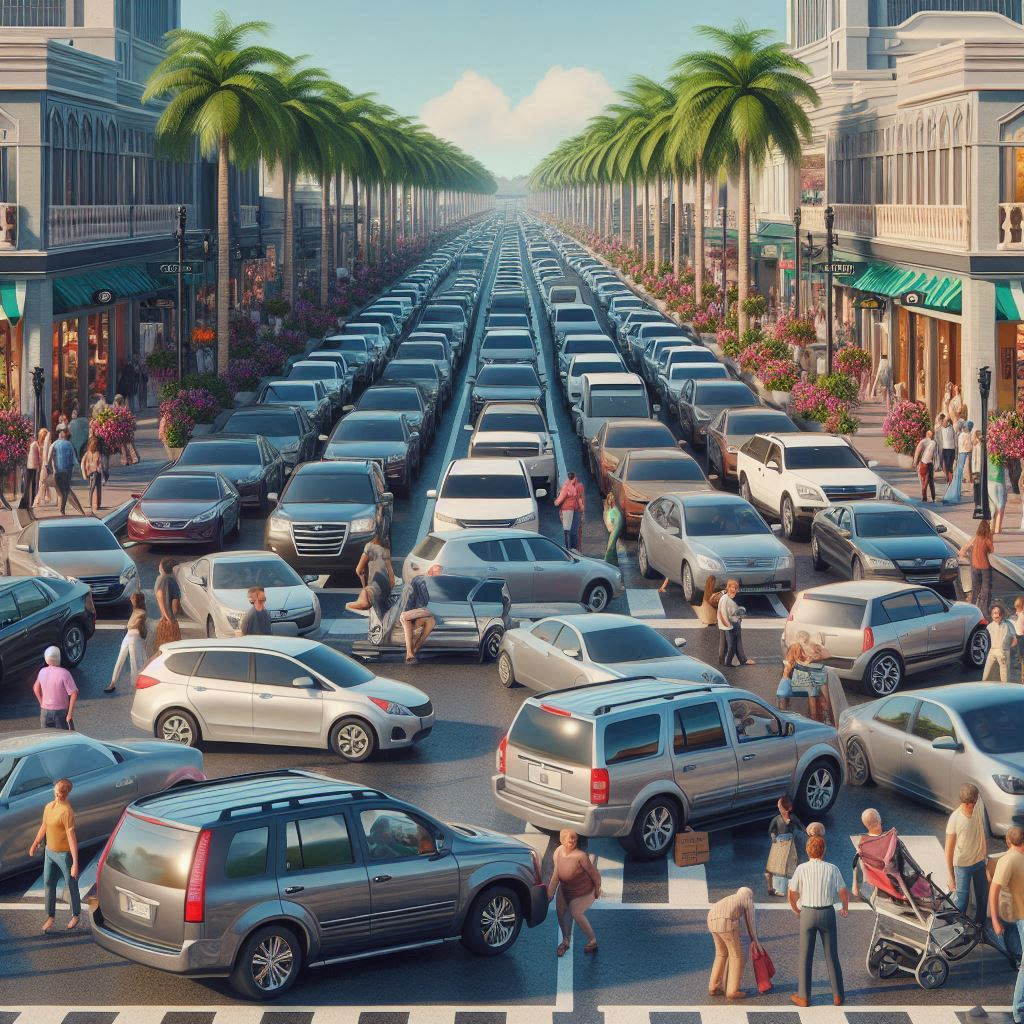Cars vs. Pedestrians: Building a Vibrant Urban Future in Vancouver
In North America, particularly in Vancouver, the urban landscape is dominated by automobiles. This car-centric planning has profound implications for urban vitality and quality of life. The overabundance of cars in our cities degrades the aesthetic and functional quality of public spaces and undermines the social fabric of our communities. As Jane Jacobs famously stated, “Cities have the capability of providing something for everybody, only because, and only when, they are created by everybody.”
Many North American cities feature urban plazas meant for people, green areas, and children’s playgrounds that often resemble graveyards for parked cars. In Vancouver, this misuse of public space is evident, with plazas cluttered with vehicles throughout the day, turning potential social hubs into parking lots. By concealing parking spaces underground or beneath buildings, we can repurpose surface areas into high-quality urban spaces that enhance social interaction and community life.
The lack of pedestrian-priority pathways is another significant issue. In Vancouver, pedestrians often yield to automobile traffic, and walking is only facilitated where pedestrian crossings exist. This prioritization of vehicles over people is counterproductive to creating vibrant urban environments. As Jan Gehl notes, “First life, then spaces, then buildings—the other way around never works.” Prioritizing pedestrian movement fosters a sense of ownership and belonging among city dwellers.
Transportation planning often favors personal vehicle use over public transportation, making driving more economical in terms of time, cost, convenience, and availability. This preference encourages citizens to rely on their cars rather than using public transit, leading to increased traffic congestion, pollution, and a decline in urban quality of life. Enrique Peñalosa, former mayor of Bogotá, argued, “A developed country is not a place where the poor have cars. It’s where the rich use public transportation.” This sentiment underscores the need for a paradigm shift in how cities plan their transportation networks.
Jan Gehl’s extensive research on public spaces supports the argument for pedestrian-centric cities. His work in cities like Melbourne and New York has shown that prioritizing pedestrian movement and reducing car dominance can rejuvenate urban areas, making them more livable and vibrant. The Project for Public Spaces also emphasizes that successful public spaces are inclusive, accessible, and prioritize people over vehicles.
The overemphasis on automobiles in urban planning is a critical issue that needs addressing to create vibrant, livable cities. By prioritizing pedestrians, concealing parking spaces, and promoting public transportation, cities like Vancouver can reclaim their public spaces for people, fostering a sense of community and improving overall urban life. It is time to rethink our urban spaces and design them to serve the people who live, work, and play in them, rather than the cars that drive through them.
As Jane Jacobs wisely said, “There is no logic that can be superimposed on the city; people make it, and it is to them, not buildings, that we must fit our plans.” By embracing this philosophy, Vancouver can take meaningful steps toward becoming a more pedestrian-friendly city, enhancing its urban vitality and quality of life for all its residents.
#UrbanDesign #Vancouver #SustainableCities #PedestrianPriority #UrbanPlanning #PublicSpaces #JanGehl #JaneJacobs #EnriquePeñalosa
you should look at this for more information:



